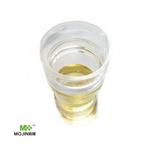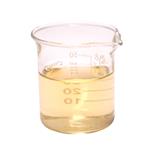
2-Bromoethanol
- Product Name2-Bromoethanol
- CAS540-51-2
- CBNumberCB3853766
- MFC2H5BrO
- MW124.96
- EINECS208-748-1
- MDL NumberMFCD00002827
- MOL File540-51-2.mol
- MSDS FileSDS
Chemical Properties
| Melting point | -80 °C |
| Boiling point | 56-57 °C/20 mmHg (lit.) |
| Density | 1.763 g/mL at 25 °C (lit.) |
| vapor density | 4.3 (vs air) |
| vapor pressure | 2.4 mm Hg ( 20 °C) |
| refractive index | n |
| Flash point | >230 °F |
| storage temp. | 2-8°C |
| solubility | 1-5 g/100 mL at 19°C |
| form | Liquid |
| pka | 13.82±0.10(Predicted) |
| color | Clear colorless to yellow |
| Specific Gravity | 1.7629 (20/4℃) |
| Water Solubility | 1-5 g/100 mL at 19 ºC |
| Sensitive | Light Sensitive |
| Merck | 14,3792 |
| BRN | 878140 |
| Stability | Stable, but probably light sensitive. Hygroscopic. Incompatible with strong oxidizing agents. Flammable. Forms an azeotrope with water. |
Safety
| Symbol(GHS) |
 
|
|||||||||
| Signal word | Danger | |||||||||
| Hazard statements | H301+H311+H331-H314 | |||||||||
| Precautionary statements | P280-P301+P310+P330-P301+P330+P331-P303+P361+P353-P304+P340+P311-P305+P351+P338 | |||||||||
| Hazard Codes | T,T+,Xn,F | |||||||||
| Risk Statements | 23/24/25-34-40-36/37/38-26/27/28-10-67-65-48/20-38-11-63 | |||||||||
| Safety Statements | 26-36/37/39-45-28A-16-62-36/37 | |||||||||
| RIDADR | UN 2922 8/PG 2 | |||||||||
| WGK Germany | 3 | |||||||||
| RTECS | KJ8225000 | |||||||||
| TSCA | Yes | |||||||||
| HazardClass | 6.1 | |||||||||
| PackingGroup | II | |||||||||
| HS Code | 29055900 | |||||||||
| NFPA 704: |
|


